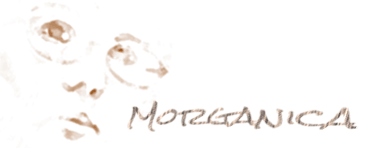“Uneven. VERY uneven,” said the man sitting next to me, “I can’t decide if she’s brilliant or a D student.”
“Yes,” concurred the lady on the other side, “She’s still looking for her voice.”
We were paging through a computer slideshow, evaluating artists’ work for a competition. Applicants had been asked to submit a body of work, not just one or two pieces, and the dozen or so from this artist were looking a bit dicey.
This wasn’t the first time I’ve been on a jury, but it’s the first time I’ve formally been a juror since I started routinely submitting my own art for judgment. I have to admit, it puts a whole different perspective on things.
I’m not going to say WHERE I was jurying, that wouldn’t be fair. I will say that we were looking at everything from paintings to wearable art, which was fun. The organizers had given us clear criteria, plenty of time, and a quiet, darkened room to view images and handle work. My fellow jurors were both highly skilled professional artists and instructors as well as experienced jurors.
As usual, I learned a lot, and was a bit embarrassed to find myself criticizing stuff I know I do in my own jury submissions. Drat. I’ve already talked about the importance of good presentation, so I won’t belabor the point (you need GREAT photographs that let the work speak for itself, never crop the work tightly–or cut off the edges–because the judges will spend most of their time wondering about what’s not there, fill the frame you’re given as much as you can, etc.).
As a juror, I was an outlier on several counts; I’m not an art professor or professional critic, I don’t jury regularly, I don’t have an art degree, and in a generic group of artists I can almost guarantee I’ll be the only one there who says “I’m a glass sculptor.” And I certainly don’t win (or even get into the finals) of every juried competition I enter. Of course, I’ve been studying, practicing and collecting art since childhood, I’ve always hung out with artists, and I’ve got this determined “journey to become an artist” thing going on that puts me both inside and outside my own head. (don’t ask) Those are advantages.
And those advantages helped me come up with a new and overarching rule for my jury submissions: NEVER do anything that would puzzle a juror. The minute they scratch their heads, you’re finished.
This particular artist submitted a dozen paintings for our consideration. A couple were really wonderful, original works that showed great paint handling, terrific use of color and good composition. Four were obvious studies after famous paintings, not bad but certainly not original (note to self: Jurors generally have seen one or two art books and probably won’t award points for originality to scenes from Giverny, Arles, Remington’s old west, etc.).
The rest of the paintings looked like class exercises, with none of the verve of the first two paintings. The subjects were all over the map, and the artist’s style, down to the brush stroke, seemed to change from canvas to canvas. We had to keep checking slide names to make sure that we were still looking at the same artist’s work; at one point we didn’t believe it until the show organizer checked. And we started speculating about whose class the artist had been taking the day she painted THAT.
Final decision: This was the work of a fledgling painter who might someday belong in this group, if she followed up on those two wonderful paintings…but not today. She took last place in our rankings.
And I started noticing: Every time a juror hesitated, looked puzzled, said, “What’s that…?” about a work, the artist’s ranking would soon head south.
Just the opposite happened with top-ranked artists. Their work held together from slide to slide, you were never in doubt as to who did it and why. I’m not saying we liked all the work, or that the pieces didn’t have some mystery, or vary as to subject matter and sometimes style. But each work was clearly from the same artist; you could absolutely find the voice of the artist in every work. In one case, the artist showed photographs, pastels, watercolors and oils…and you could tell that one very mature artist was making it. (Even though I personally didn’t care for the work)
So…my clue for the day: Consistency is important, as is a strong voice that shows through whether you’re making a greeting card or a 20-foot bronze statue. The judge doesn’t necessarily have to like it, but he must be absolutely certain that it’s your work.
NOT good news for me, since at the moment my artistic voice is about as consistent as a chameleon. But I think I’m gonna go back and reorganize my portfolio, do some weeding out, and see if I can’t put my new rule to work.

Hm. Much to ponder. Thanks!
Yes, thanks you, I think it is very helpful. I seem to find that many successful pieces are composed of more than one piece, like a triptych or similar. Seems to me repetition and variation does good to the artist.. Is’nt that so?
Very helpful advice! So many good points that I have made a note to remember as I start to prepare my own submissions. Thanks for putting this all down in writing, Cynthia!
thanks, yes helpful…still finding my voice..think I have it then puff…..heheh
Very helpful. Thanks for sharing.